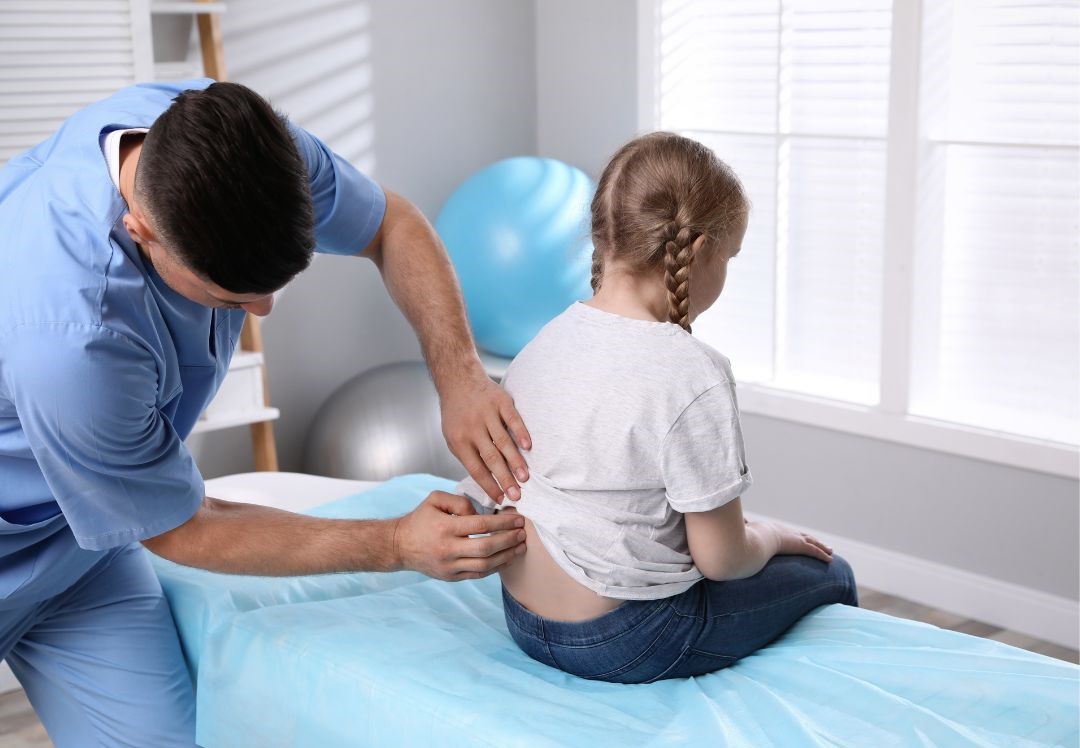Welcome to our exploration of Juvenile Idiopathic Scoliosis (JIS), a condition that affects children and adolescents. If you suspect your child has scoliosis, please call us on (03) 8360 8363. The osteopaths at Altona Meadows Osteopathy are here to help. In the meantime, let’s understand what’s going on…
Juvenile Idiopathic Scoliosis Overview:

Juvenile Idiopathic Scoliosis is a complex spinal condition. It usually manifests during childhood or adolescence, while young bodies are growing rapidly. Idiopathic means that there’s no clear cause for the scoliosis — the abnormal curvature of the spine. Since there’s no clear cause, it’s important that parents to be vigilant for any signs in their children.
Anatomy of the Spine:
To better understand JIS, let’s get to grips with the anatomy of the spine. The spine consists of vertebrae, discs, and ligaments that work together to provide support and flexibility. But when scoliosis strikes the spine develops an abnormal sideways curvature, often resembling an ‘S’ or ‘C’ shape.
Causes of Juvenile Idiopathic Scoliosis:
Despite extensive research, the exact cause of JIS remains elusive. As we mentioned earlier, the very word idiopathic means arising spontaneously or cause unknown. (It’s a mash-up of two Greek words: “idios” meaning “one’s own” or “peculiar” and “pathos” meaning “suffering” or “disease.” The word scoliosis comes from the Greek word for “crooked” by the way.) However, JIS is believed to involve a combination of genetic and environmental factors. Genetics play a crucial role, with a higher likelihood of scoliosis if a family member has had it. Other potential factors include abnormalities in the neuromuscular system and hormonal imbalances during growth spurts.
Complications of Juvenile Idiopathic Scoliosis:
Left untreated, JIS can lead to various complications. These may include respiratory issues due to the restriction of lung capacity, discomfort, and chronic pain. Additionally, severe cases may impact the heart and other organs, underscoring the importance of early detection and intervention.
How Osteopathy Can Help:
Osteopathy offers a holistic approach to managing JIS. Our osteopaths employ a range of gentle and non-invasive techniques to address musculoskeletal imbalances associated with scoliosis. These may include myofascial release, joint mobilisation, and therapeutic exercises tailored to the individual needs of the child.
Osteopathic interventions aim to:
Improve posture: Osteopaths work to correct postural imbalances, reducing the strain on the spine and associated structures.
Enhance mobility: By addressing restrictions in joint mobility, osteopathy helps restore normal movement patterns in the spine.
Strengthen supporting muscles: Osteopaths provide exercises to strengthen the muscles supporting the spine, promoting stability, and reducing the progression of scoliosis.
Conclusion:
If you suspect your child may be dealing with Juvenile Idiopathic Scoliosis, our dedicated team at Altona Meadows Osteopathy is ready to assist. Give us a call at (03) 8360 8363 to schedule an appointment. Early intervention is key to managing scoliosis effectively. We look forward to helping your child thrive with a straighter, healthier spine.
PS: Don’t forget to follow us on social media for more informative content. We’re on Facebook and Instagram.